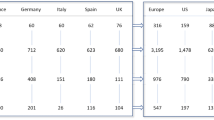Abstract
Our purpose of this study was to investigate whether clinical rapid eye movement sleep behavior disorder (RBD) is indicative of more widespread degenerative changes in Parkinson’s disease (PD), using a longitudinal cohort. In 2005 and 2007, we prospectively collected clinical and treatment characteristics of 61 consecutive patients with PD. The presence of RBD was assessed by spouse interview. Sixty-four percent of patients had clinical RBD in 2005, versus 52% of patients in 2007. The yearly incidence rate of clinical RBD onset was 9%, while clinical RBD disappeared in 14% of patients per year. The motor disability scores (when treated) were worse in patients with than without clinical RBD in 2005, but not in 2007. There was no difference between groups for frequency of freezing, falls, and hallucinations, or for scores on the depression scale, sleepiness scale, mini-mental state examination and frontal assessment battery at the beginning versus the end of the study. Patients with clinical RBD were disabled earlier than patients without RBD, but there was no specific worsening in the RBD group with time, either for motor or non-motor symptoms. The fluctuation and disappearance of clinical RBD in some patients may be due to functional abnormalities rather than lesions.

Similar content being viewed by others
References
Beck AT, Ward CH, Mendelson M, Mock J, Erbaugh J (1961) An inventory for measuring depression. Arch Gen Psychiatry 4:561–571
Boeve B, Silber M, Saper C et al (2007) Pathophysiology of REM sleep behaviour disorder and relevance to neurodegenerative disease. Brain 130:2770–2788
De Cochen Cock V, Vidailhet M, Leu S et al (2007) Restoration of normal motor control in Parkinson’s disease during REM sleep. Brain 130:450–456
Comella C, Nardine T, Diederich N, Stebbins G (1998) Sleep-related violence, injury, and REM sleep behavior disorder in Parkinson’s disease. Neurology 51:526–529
Dubois B, Slachevsky A, Litvan I, Pillon B (2000) The FAB: a frontal assessment battery at bedside. Neurology 55:1621–1626
Fahn S, Elton RL, Members of the UPDRS development committee (1987) Unified Parkinson’s disease rating scale. In: Fahn S, Marsden CD, Goldstein M, Calne DB (eds) Recent developments in Parkinson’s disease, vol II. Macmillan, New York, pp 153–163
Folstein MF, Folstein SE, McHugh PR (1975) Mini-mental state. A practical method for grading the cognitive state of patients for the clinician. J Psychiatry Res 12:189–198
Gagnon JF, Fantini ML, Bedard MA et al (2004) Association between waking EEG slowing and REM sleep behavior disorder in PD without dementia. Neurology 62:401–406
Gjerstad MD, Boeve B, Wentzel-Larsen T, Aarsland D, Larsen JP (2008) Occurrence and clinical correlates of REM sleep behaviour disorder in patients with Parkinson’s disease over time. J Neurol Neurosurg Psychiatry 79:387–391
Goetz CG, Stebbins GT (1993) Risk factors for nursing home placement in advanced Parkinson’s disease. Neurology 43:2227–2229
Iranzo A, Santamaría J, Rye DB et al (2005) Characteristics of idiopathic REM sleep behavior disorder and that associated with MSA and PD. Neurology 65:247–252
Kumru H, Santamaria J, Tolosa E, Iranzo A (2007) Relation between subtype of Parkinson’s disease and REM sleep behavior disorder. Sleep Med 8:779–783
Marion MH, Qurashi M, Marshall G, Foster O (2008) Is REM sleep behaviour disorder (RBD) a risk factor of dementia in idiopathic Parkinson’s disease? J Neurol 255:192–196
Oudiette D, De Cock VC, Lavault S, Leu S, Vidailhet M, Arnulf I (2009) Nonviolent elaborate behaviours may also occur in REM sleep behaviour disorder. Neurology 72:551–557
Postuma RB, Gagnon JF, Vendette M, Charland K, Montplaisir J (2008) REM sleep behaviour disorder in Parkinson’s disease is associated with specific motor features. J Neurol Neurosurg Psychiatry 79:1117–1121
Postuma RB, Gagnon JF, Vendette M, Charland K, Montplaisir J (2008) Manifestations of Parkinson disease differ in association with REM sleep behavior disorder. Mov Disord 23:1665–1672
Razmy A, Lang AE, Shapiro CM (2004) Predictors of impaired daytime sleep and wakefulness in patients with Parkinson disease treated with older (ergot) versus newer (nonergot) dopamine agonists. Arch Neurol 61:97–102
Sinforiani E, Pacchetti C, Zangaglia R, Pasotti C, Manni R, Nappi G (2008) REM behavior disorder, hallucinations and cognitive impairment in Parkinson’s disease: a two-year follow up. Mov Disord 23:1441–1445
Sinforiani E, Zangaglia R, Manni R et al (2006) REM sleep behavior disorder, hallucinations, and cognitive impairment in Parkinson’s disease. Mov Disord 21:462–466
Vendette M, Gagnon JF, Décary A et al (2007) REM sleep behavior disorder predicts cognitive impairment in Parkinson disease without dementia. Neurology 69:1843–1849
Yoritaka A, Ohizumi H, Tanaka S, Hattori N (2009) Parkinson’s disease with and without REM sleep behaviour disorder: are there any clinical differences? Eur Neurol 61:164–170
Acknowledgment
We thank the research nurses from the CIC (Clinical Research Center of Saint-Antoine Hospital) and from the Sleep Disorders Unit of Pitié-Salpêtrière Hospital. The study was funded by Association pour le Developpement de la Recherche en Pneumologie (Promotor), and the Fédération pour la Recherche sur le Cerveau.
Conflict of interest statement
The authors report no conflicts of interest in this work.
Author information
Authors and Affiliations
Corresponding author
Rights and permissions
About this article
Cite this article
Lavault, S., Leu-Semenescu, S., Tezenas du Montcel, S. et al. Does clinical rapid eye movement behavior disorder predict worse outcomes in Parkinson’s disease?. J Neurol 257, 1154–1159 (2010). https://doi.org/10.1007/s00415-010-5482-y
Received:
Revised:
Accepted:
Published:
Issue Date:
DOI: https://doi.org/10.1007/s00415-010-5482-y




